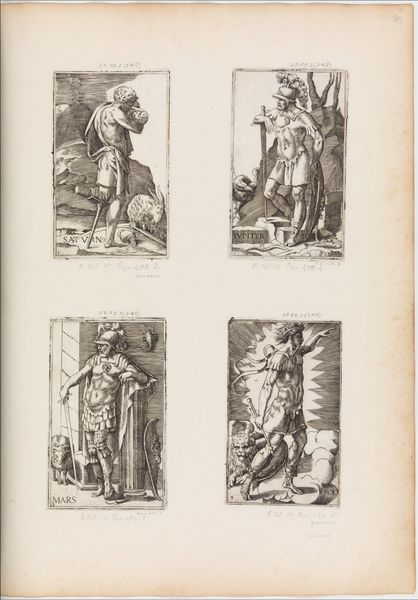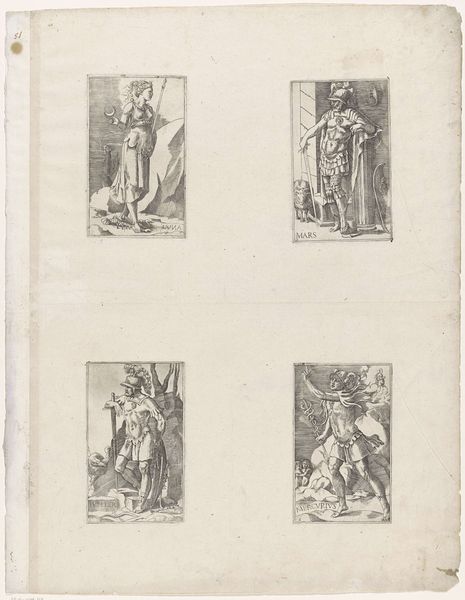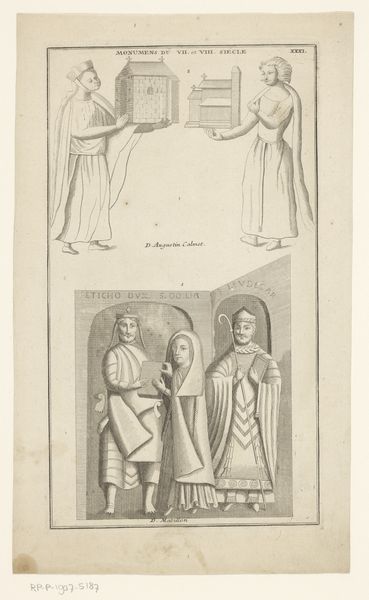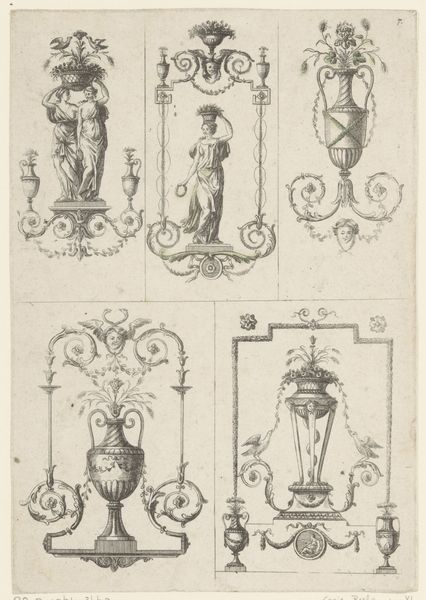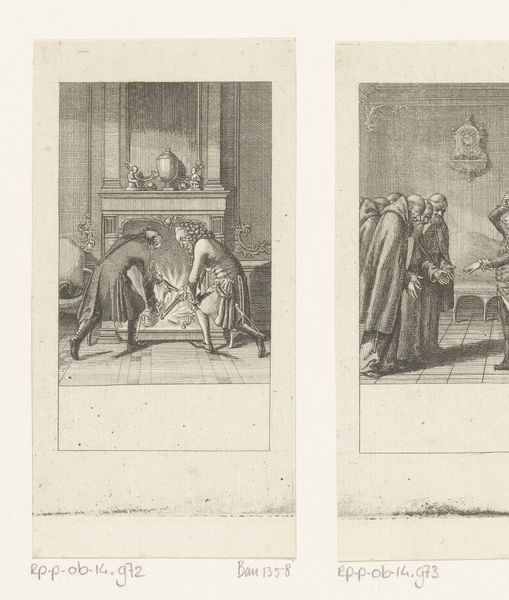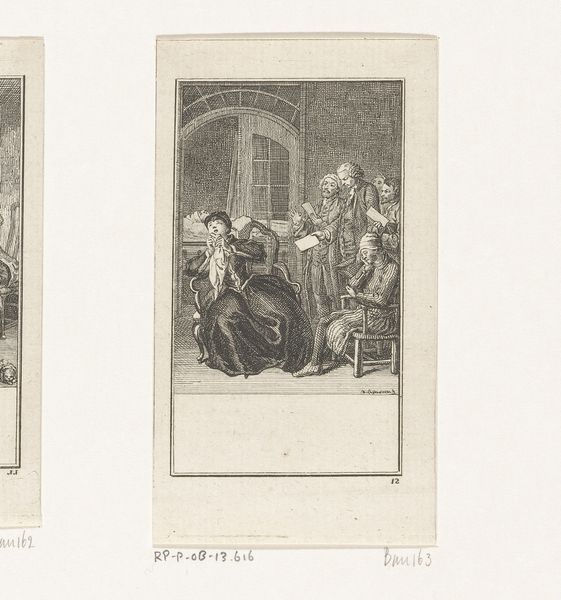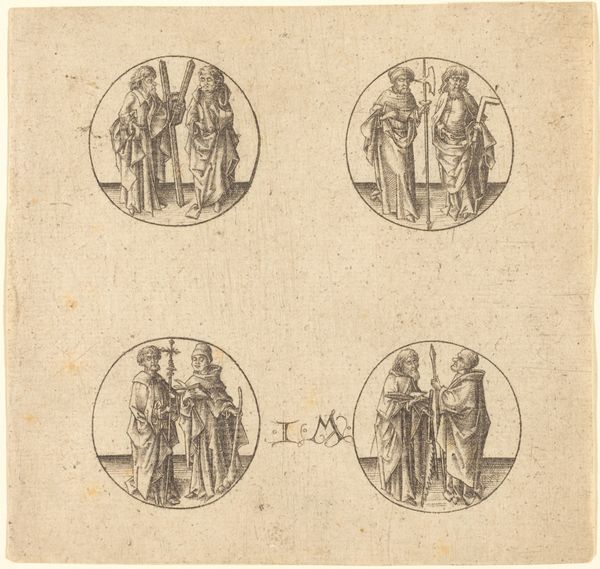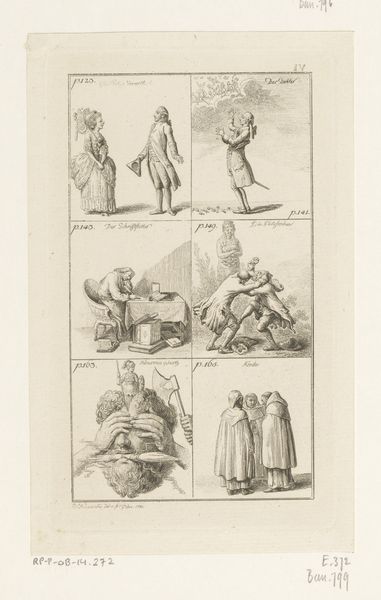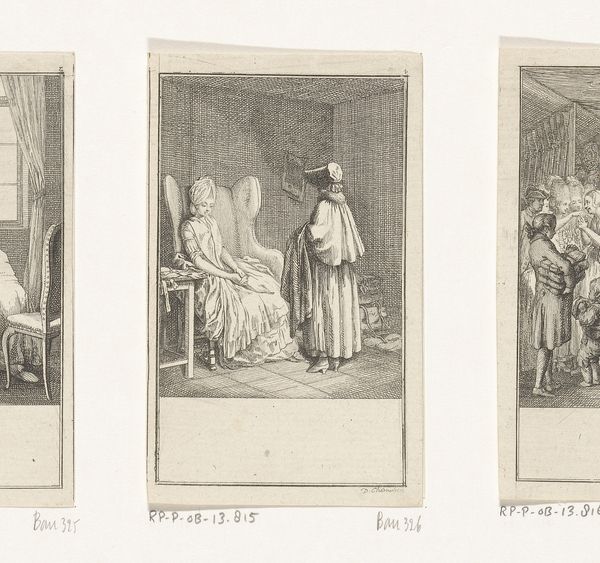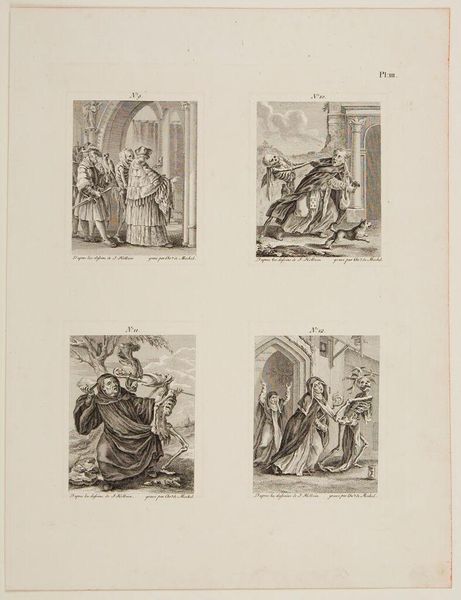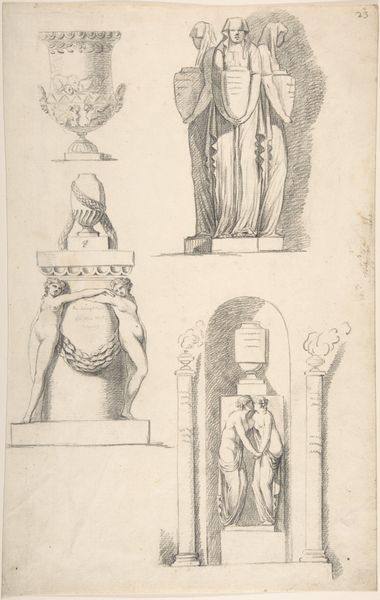
Fragmenten van prenten met wereldlijke en geestelijke klederdrachten 1581 - 1596
0:00
0:00
drawing, paper, ink
#
portrait
#
drawing
#
quirky sketch
#
mannerism
#
paper
#
personal sketchbook
#
ink
#
sketchwork
#
ink drawing experimentation
#
pen-ink sketch
#
sketchbook drawing
#
genre-painting
#
storyboard and sketchbook work
#
northern-renaissance
#
sketchbook art
#
fantasy sketch
#
initial sketch
Dimensions: height 180 mm, width 125 mm
Copyright: Rijks Museum: Open Domain
Editor: Here we have "Fragmenten van prenten met wereldlijke en geestelijke klederdrachten," dating from 1581 to 1596 by Abraham de Bruyn, held in the Rijksmuseum. It's an ink drawing on paper, presented in four separate vignettes. What strikes me is how immediate and almost documentary it feels, like a quick study of the social landscape of the time. What do you make of this piece? Curator: Well, the "Fragmenten" title is quite telling. Consider that these "fragments" offer a glimpse into the rigid social structures of the late 16th century. The emphasis on clothing, both secular and religious, highlights the importance of outward appearance in defining one's status and role within society. De Bruyn isn't just showing us pretty clothes; he's revealing the visual language of power and belonging. How might the detail, or lack thereof, in these depictions contribute to our understanding? Editor: I guess it’s interesting that some of the figures appear more meticulously rendered than others. Perhaps it speaks to a hierarchy even within those social strata? Were these images intended for a specific audience or purpose? Curator: Precisely! And yes, these were likely studies for prints, meant for a burgeoning middle class eager to understand and perhaps emulate the fashions of the elite. These images, disseminated widely, played a role in shaping social aspirations and solidifying existing hierarchies. This tells us a lot about the public role of art and its influence on cultural identity back then. Editor: It's fascinating to think about these drawings not just as artworks, but as social documents shaping perceptions of class and identity. Curator: Indeed. Looking at this work prompts us to consider the power dynamics inherent in representation itself. It’s made me rethink the subtle ways art reflects and reinforces social norms. Editor: I'm walking away thinking about the layers of meaning embedded within something that seems so simple on the surface. It’s great how historical context completely changes the interpretation!
Comments
No comments
Be the first to comment and join the conversation on the ultimate creative platform.
